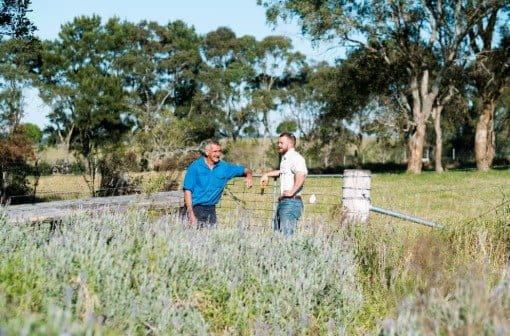“By measuring and tracking wellbeing over time and deepening our understanding of factors that can promote better health and wellbeing we can make a real difference to our community.”—Associate Professor Delyse Hutchinson, Deakin University.
Key points
- Research has shown there are numerous health, job, family and economic benefits that we can attribute to greater wellbeing.
- Since the Wellbeing Index’s inception 20 years ago, Australian Unity and Deakin University have almost 40 nationally representative surveys with more than 65,000 Australian adults across the country.
- Wellbeing is being used to inform our future actions, but it is also affected by our thoughts and experiences about our future prospects.
Wellbeing, as a concept, is popular right now. From social media to traditional news forums, everyone is talking about what can be done to boost our physical and mental wellbeing. But, while much of the discussion is subjective, wellbeing is actually quantifiable. In fact, it has the potential to become a metric that shapes our future.
The Australian Unity Wellbeing Index is the longest running study into wellbeing nationally. Produced in partnership with Deakin University, it has been measuring, tracking and reporting on the wellbeing of Australians for more than 20 years.
Associate Professor Delyse Hutchinson of Deakin University, is a Clinical Psychologist and Researcher on this ongoing study. After many years of studying the results, Delyse and the Deakin team are now seeing the fruits of their labour.
So how exactly do we measure something subjective like wellbeing, and what importance does it play in our lives?

Why is measuring wellbeing important?
According to Delyse, measuring wellbeing is important as it is a critical indicator of community health that can (and does) have far-reaching impacts on our society.
“By being able to measure wellbeing, we have established a scientifically-based understanding of wellbeing within the Australian context, and have established a national monitoring system to track changes in wellbeing,” Delyse explains. “This provides critical information to inform public health and community-level actions to promote wellbeing in Australia.”
The research has shown there are numerous health, job, family and economic benefits that we can attribute to greater wellbeing. In one example, Australian Unity Wellbeing Index research found that higher levels of wellbeing are associated with better health outcomes – and that translates to people recovering more quickly from illness . Similarly, individuals with high levels of wellbeing are more likely to contribute to their communities .
These studies show that our wellbeing affects more than how we feel – it can also impact on the way in which we live, and how people function in the wider Australian community.
How do we measure wellbeing?
According to the Australian Unity Wellbeing Index, there are seven core “domains” of wellbeing, which are measured in order to assess people’s life satisfaction. These are:
- Personal relationships: The quality of your relationships with family, friends and significant others.
- Sense of achievement: Finding a purpose, direction or meaning in your life.
- Standard of living: Having enough money or financial control to live and enjoy life.
- Health: Your physical and mental state.
- Community connectedness: A sense of belonging and connection to the people around you.
- Personal safety: How we feel about our personal safety, but also how this translates into our communities and our nation overall.
- Future security: How we feel about our future in terms of job security, health, the environment and other factors.
“There are a range of tools available to assess different elements and perspectives on wellbeing. Among these, the Australian Unity Wellbeing Index is a scientifically rigorous tool for assessing wellbeing in Australian adults,” says Delyse.
By conducting annual surveys in our community, we’re able to see how factors like age, income or relationships affect our sense of wellbeing over time.
Delyse continues: “We derived the domains based on prior research and theories of wellbeing, followed by survey development and testing in the community to refine the survey and establish its psychometric rigour.”

Who are we studying?
Since the Wellbeing Index’s inception 20 years ago, Australian Unity and Deakin University have almost 40 nationally representative surveys with more than 65,000 Australian adults across the country, covering a wide-ranging demographic, including Australians in metropolitan, regional and rural communities.
As Delyse explains: “This allows us to track changes in wellbeing in relation to things like national events, and among specific groups in the community.”
Delyse notes that the Australian Unity Wellbeing Index is widely used as a measure of individual and community wellbeing, and has been adapted and validated for use with both adults and children, and among people with an intellectual or cognitive impairment. It’s available in twenty-six translations for adults, four for people with an intellectual impairment, and five for school children.
The Australian Unity Wellbeing Index is a valid cross-cultural instrument developed by the International Wellbeing Group, and has been empirically validated with input from over 150 researchers from more than 50 countries, worldwide.
How are we using this research to inform the future?
Like many research projects, the annual cross-sectional and longitudinal data gathered from the Australian Unity Wellbeing Index is being used to determine how our wellbeing changes over time.
“By measuring and tracking wellbeing over time and deepening our understanding of factors that can promote better health and wellbeing we can make a real difference to our community,” says Delyse.
“Our research will continue to build awareness of wellbeing and its importance to our community. For example, there is growing awareness of wellbeing in the workplace, and the way in which wellbeing can promote better work performance and social connections.”

Wellbeing is therefore being used to inform our actions moving into the future, but it is also affected by our thoughts and experiences about our future prospects.
“Over time, different events in Australia will impact on our wellbeing. For example, the COVID-19 pandemic is an issue impacting not just Australians but the World population,” says Delyse.
“The way in which our society evolves and the social climate of the time also dictates our wellbeing”, she says. “There is also growing interest in our wellbeing in the context of technology and social media, and an increasing focus on the nexus between wellbeing and the protection of our natural environment for future generations to come.”
The growing acceptance and importance of nurturing and improving our wellbeing is a trend that is set to continue into the future, assisted by an increase in the tracking of reputable data and metrics such as the Wellbeing Index.
While we may personally fluctuate throughout the course of our life in certain domains of our wellbeing, studies like the Australian Unity Wellbeing Index allow us to measure and report trends and changes to Australian wellbeing over time. And that data can only have a positive effect on our communities and our future.
Disclaimer: Information provided in this article is of a general nature. Australian Unity accepts no responsibility for the accuracy of any of the opinions, advice, representations or information contained in this publication. Readers should rely on their own advice and enquiries in making decisions affecting their own health, wellbeing or interest. Interviewee titles and employer are cited as at the time of interview and may have changed since publication.
.jpg)

.jpeg)